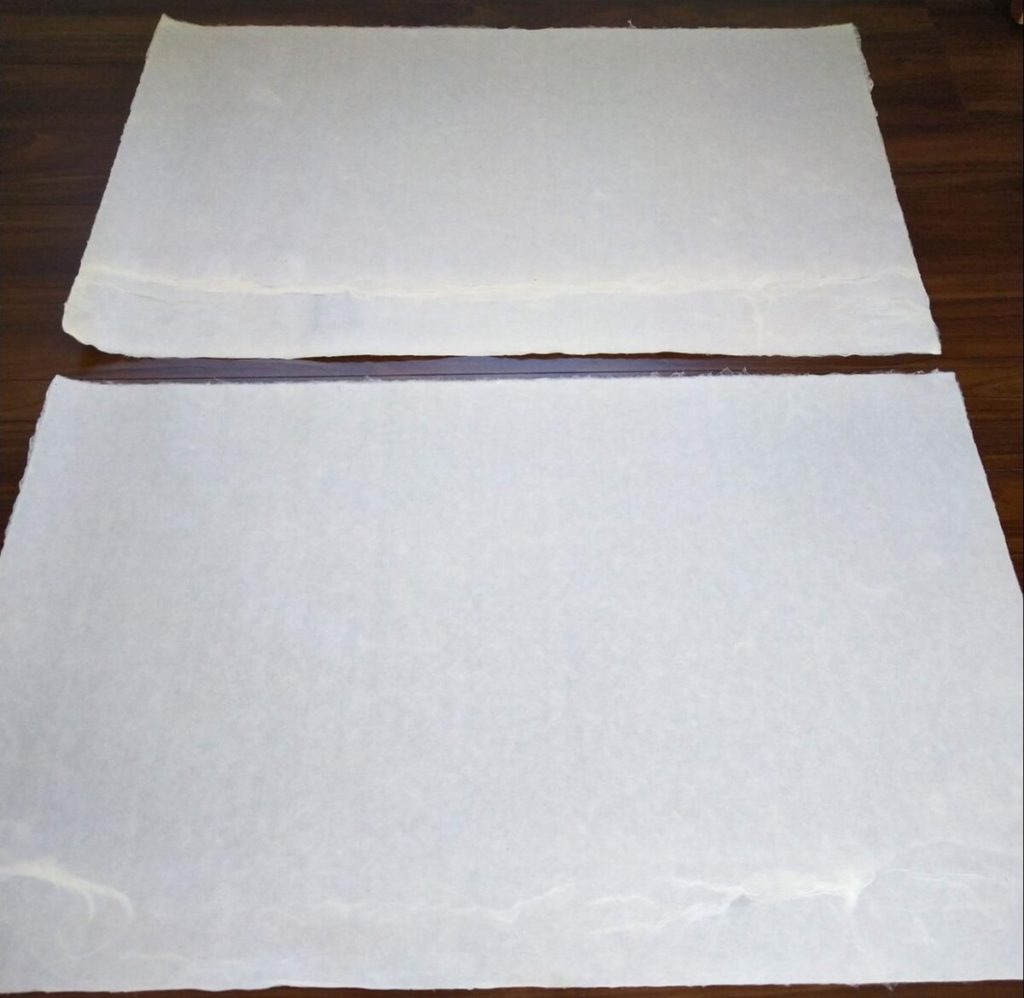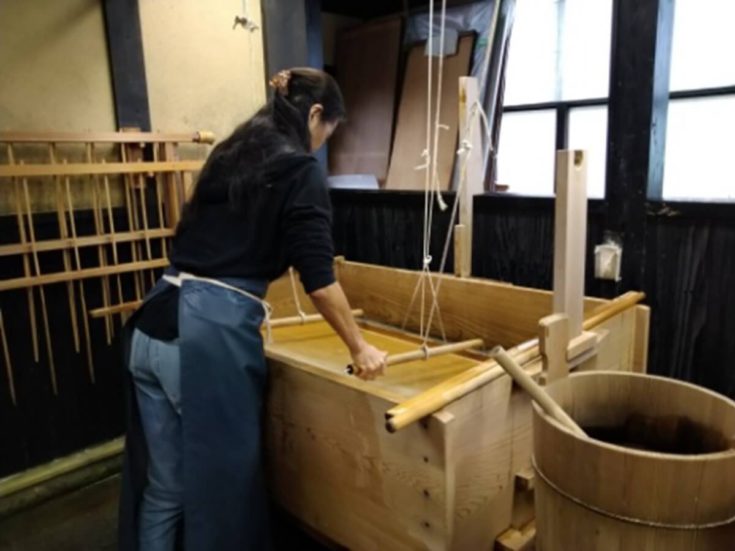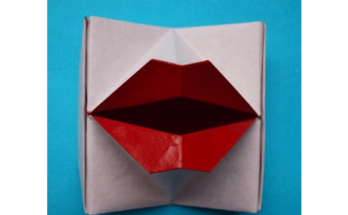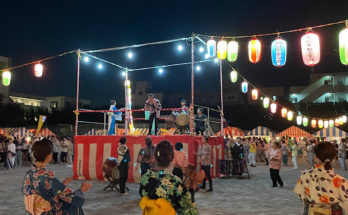Hello. Are you interested in Washi (和紙)? Washi is traditional Japanese paper.
I’ve been fascinated with Japanese traditional paper for a long time because paper is one of the important tools for my calligraphy which I write with my whole heart.
In this article, I will describe my experience making Japanese traditional paper by hand.
Where is Echizen?
There are many famous places where Japanese traditional paper is made, but I had the opportunity to visit Fukui prefecture and I was able to take a workshop making Echizen Washi in Echizen city in Fukui prefecture. Fukui prefecture is located in the Hokuriku area in the Chubu area of Japan. Echizen is situated in the center of Fukui prefecture. This location is not only the origin of Echizen Washi, but also Echizen Knives(越前刃物), Echizen Lacquerware(越前漆器), Echizen Potery(越前焼き)and Echizen chests(越前箪笥).
The variety of Echizen Washi is remarkable
The characteristics of Echizen Washi are that they are not only beautiful and soft but also strong, long-lasting and range from thick to thin. Echizen Washi is used for calligraphy, drawing, Japanese style painting, woodblock printing, wrapping paper, wall paper, sake labels, postcards, letter paper, envelopes, name cards and diplomas to name a few. As for the famous category of Echizen Washi, Echizen hosho paper (越前奉書)which was used for official documents that recorded the wishes of the emperor and shogun is high quality paper and is made from 100% Kouzo(楮). Echizen torino koshi(越前鳥の子紙)is representive of Echizen Washi and is called the king of paper.
You can learn more about the origin and 1500 years of history and the process of Echizen washi at “Paper & Culture museum (越前和紙の博物館) in Echizen washi village (越前和紙の里). You can also see a variety of Echizen Washi there. The variety of Echizen Washi caught me by surprise.
https://www.echizenwashi.jp/facility/museum
I offered my gratitude to the goddess of paper
There is a legend which says that the goddess of paper appeared upstream of the river 1500 years ago and she taught the village people how to make paper. People named her “Kawakami Gozen”(川上御前)and worshiped her. The goddess of paper “Kawakami Gozen” was enshrined at Okamoto shrine(岡太神社)and Ootaki shrine(大瀧神社)by the village people.

When I arrived at the entrance to these shrines, the mysterious and sacred atmosphere there struck me and I felt gratitude for using paper every day.
Thank you for the paper.
The experience of seeing, listening and touching made a lasting impression on me.


This street is a Echizen Washi village(越前和紙の里).
The 230 meter street consists of a stream and traditional houses and shops selling souvenirs and small products.
I was able to experience three works within the long process of making Echizen Washi at Udatsu craft museum(卯立工芸館). The museum is remade from a house used for making Echizen Washi in the middle of the Edo era and is located in Echizen Washi village(越前和紙の里).
First of all, I was able to see and touch pure Japanese natural plant materials as kouzo(楮), mitsumata(三椏), and ganpi(雁皮) .



I experienced removing trash and dirt from tree bark after boiling the plants. The cold water made my fingers numb while I worked. However, the hands-on activity got me thinking about the importance of pure natural plants and the water. The texture of Kouzo(楮)on my hands was gentle for my heart. The water calmed my spirit.

I experienced pounding it with the mallet made of oak until it became like cotton without fiber. The oak mallet is very heavy and it was difficult for me to continue it with the same rhythm for a long time, but the tapping sound of a washi artisan was regular and steady.



This is a slimy liquid is made from the root of Tororoaoi(トロロアオイ)
I experienced mixing it with my hands into paper materials. It looked easy but its texture was like slime I played with when I was a kid. It was difficult to hold onto it.
Finally, It is time to challenge myself to try one of the things I wanted to do.

This was forming a few thin layers in the Sukibune(漉槽) without cutting or biasing while moving the Sukibune back and forth. A Sukibune is heavy and big and It was difficult for me to move it while keeping balance and form evenly.

I liked the sound between the water and the Sukibune. It made my day.
I practiced over and over again and finally I was able to make two pieces of Echizen Washi about one meter in length and width. I was impressed by being able to make my own paper for the first time in my life.
The two pieces of paper that I made arrived at my home after several days after squeezing the water and drying it to completion by the craftsman.
The hand texture is soft and fluffy and the quality is nice and strong. I was filled with happiness while just watching and touching it.
I’d say also this experience revved up the original senses of my body.

Another experience making Echizen Washi
You can enjoy easily the experience at Papirusu kan(パピルス館)with the support of a staff member. You can also design it by choosing colored paper or dried plants or color spray. It takes about 30 minutes to complete it. You can bring it home. You can also make small items, such as traditional fans, lampshades and so on, and beautiful Echizen Washi or art and small products are sold there. If you have time while traveling, please let’s drop by and enjoy it. I hope you have a great time.

Access
If you like, please visit Echizen and experience making Echizen Washi yourself. The Hokuriku Shinkansen line was extended to Fukui in March 2024, and it is now easier to get there.
I attached the Access for Echizen Washi village(越前和紙の里) below.
https://www.echizenwashi.jp/english/information/accessmap.html
Lastly
I feel like machine-made paper technology is developing more and more, and the demand for paper is decreasing in current society, but this experience made me rethink the importance of Japanese traditional paper.
I know that It’s difficult with just one experience to deeply understand the essence of the tradition, or the profound spirit of artisans who seriously pass it on to the next generation, however as a Japanese person,I am proud of the spirit of the Japanese.
If you could see, listen and touch Japanese tradition or Japanese culture,
you might deeply feel “the beauty of Japan”.
If you have a chance, please give it a go!
Thank you for reading my article and I deeply appreciate everyone who supported me.
My work is supporting the health of the body and mind through exercise and relaxation. Plus, I’m a Japanese calligrapher. I like to explore nature and connect with the energy of nature. I’d like to express my feelings about nature in English, so I keep learning English.





 HTJ has a YouTube page! Check it out
HTJ has a YouTube page! Check it out